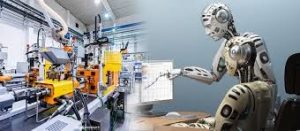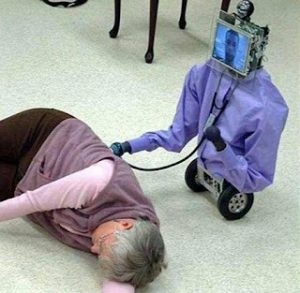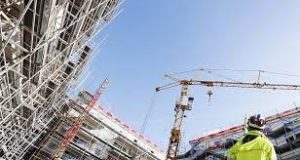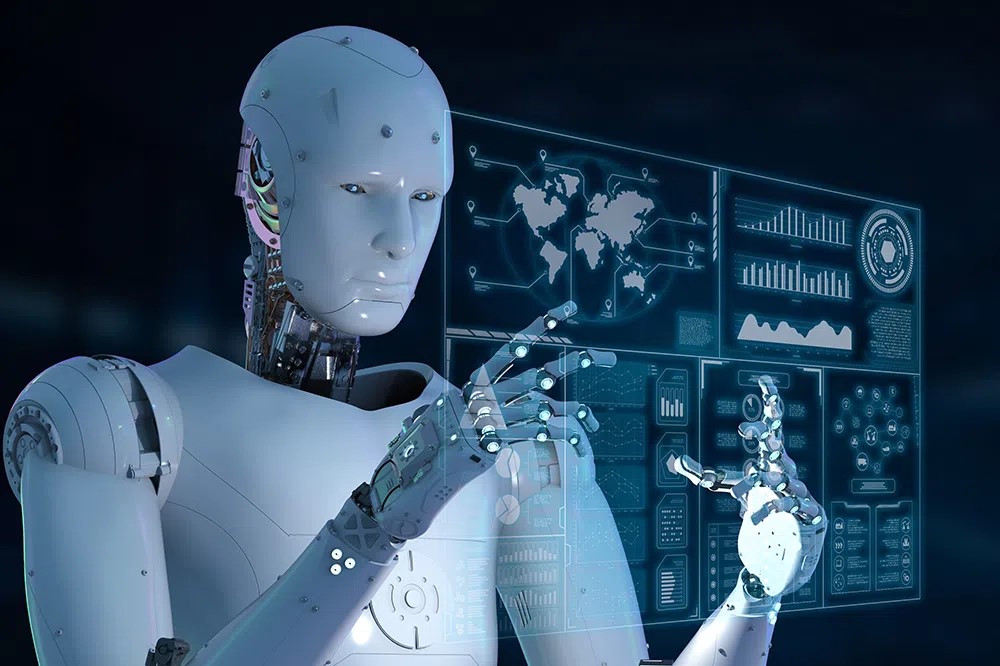Mechatronics, a multidiscipline approach in Engineering and Technology, emerged in Japan at the end of the 1960s and has undergone extensive research to reach its current status. Its contribution to manufacturing, medicine, textile construction, and energy is enormous. It paves the way for automation in the above-mentioned domains and enhances quality and productivity. In this article, a review of the current trends in Mechatronics in the above-mentioned domains has been investigated and articulated.
Mechatronics in Manufacturing
Mechatronics has a significant contribution to manufacturing, as shown in Figure 1. Automation has taken a major role in manufacturing and robots are performing the majority of jobs that were once accomplished by skilled workers. Implementing smart machines by incorporating the Internet of Things (IoT) and Artificial Intelligence (AI), leads to precise manufacturing and attaining the zero waste target. Nowadays, the manufacturing system is much improved in interconnectivity and the manufacturing personnel can see the real-time process and take decisions accordingly. In recent days, 5G connectivity has taken on the role of lightning-fast communication. 5G also plays an important role in industry decisions and problem-solving. Along with 5G, IoT allows us to send communication to users who are not on-site.

Figure 1. Mechatronics in advanced manufacturing
(Source: https://www.opennaukri.com/mechatronics-engineering-the-right-career-option-for-you/)
Mechatronics in Medicine
Mechatronics has emerged as an eminent sector in healthcare technology (Figure 2). The major milestones of Mechatronics in the medical field include deep learning algorithms in disease diagnosis, rehabilitation robot development, and bio-signal devices for various applications. Technology such as MEMS (Micro Electro Mechanical Systems) offers the miniaturization of devices to fabricate minute devices for medical and biological applications. This paves the way for an effective drug delivery system, which is a promising alternative to conventional methods. These techniques target only the affected cells or tissues, significantly reducing the side effects of drugs commonly used in certain types of treatments such as cancer, etc. These kinds of technical treatments have a high impact on retinal diseases. Normally, sending drugs to the brain is difficult, but by implementing the nano drug delivery system, it is possible to reach the most complex parts of the brain. Similarly, it is commonly known that the different organs in the human body have different pH values, and the drug can be targeted toward the particular organ by tracking the specific pH value. Apart from this, there is recent research in nano vaccines, which can be combined with bacterial DNA, which is programmed to trigger the immune system.

Figure 2. Mechatronics in medicine
(Source: http://abme.blogspot.com/2013/03/robot-in-medicine.html)
Mechatronics in Textile
A recent study shows that textiles, footwear, and home textiles are the fourth highest priority worldwide, next to food, houses, and transport. Mechatronics technology is extremely important in textile supply chain management, and it has recently made inroads into various textile processing such as printing, knitting, and embroidery as shown in Figure 3. Unsupervised decision-making is integrated with the textile machinery to create unsupervised decision-making without human intervention. The Epson F7200 printing machine, border lace-making machine, and RX300 spinning frame are a few examples of mechatronics machinery for various processes in the textile sector. Today, the textile industries have multiplied several times more than in the previous decades to meet the huge demand, and textile mechatronics enhances production growth in a significant way.

Figure 3. Mechatronics in Textile
(Source: https://medcraveonline.com/IRATJ/IRATJ-08-00237.pdf)
Mechatronics in Construction
Mechatronics in construction (figure 4) mainly focuses on the development of smart buildings where the building can utilize energy at an optimal level and also depends on renewable forms of energy generation. The advanced robot dynamics support the clearing of construction debris and are also involved in construction activities. Mechatronics involved in these civil activities is more environmentally sustainable. They are autonomous and do not require an operator for operation. Imaging technology is one of the most advanced operations in the construction industry. Here, special drones are involved in imaging the construction site and giving details about the work site. The Artificial Intelligence (AI) incorporated into the system enables it to predict the essential tasks to be performed on the site. These provisions help with remote monitoring of the construction site. Many difficult tasks are performed by robots, such as painting drones, which can reach places that a manual laborer would find difficult to reach. In the case of road construction, autonomous vehicles are implemented in laying the roads and these vehicles are used in regions where the traffic is very high, thereby preventing accidents to a great extent.

Figure 4. Mechatronics in Construction
(Source: https://www.mechatronicspvt.com/construction-and-engineering.html)
Mechatronics in Energy
Current global-level issues such as carbon emissions and global warming due to the usage of non-renewable energy lead to a significant change in climatic conditions (Figure 5). These changes have an adverse impact on the economy of the nation due to agricultural degradation and a decline in the production sectors such as textiles, manufacturing, etc.. In order to overcome these issues, a sustainable energy sector should be implemented worldwide. There are various challenges encountered in implementing the renewable energy sector. These constraints can be successfully overcome by the usage of various Mechatronics systems. Mechatronics systems are widely used in energy optimization in solar, wind, and wave energy. In the solar sector, the Mechatronics system plays an important role in optimal energy conversion by effective tracking of solar radiation and also in the development of smart grid technologies. Further, in the wind and wave sectors, the Mechatronics system takes the responsibility of maintaining the dynamics of the plant to match the incoming wave and wind conditions. The system has the ability to tune itself to maintain optimal power extraction.

Figure 5. Mechatronics in Energy
(Source: https://www.captechu.edu/blog/mechatronics-engineering-and-renewable-energy-systems)
Mechatronics is a multidiscipline approach that includes computer science, production systems, electrical, and electronics and has tremendous application in various sectors. In the near future, mechatronics will contribute to every part of life. The recent advancements in the engineering and technology sectors pave the way for the development of sustainable products that will drastically reduce the carbon footprint of the entire globe and lead to secure and sustainable development.

